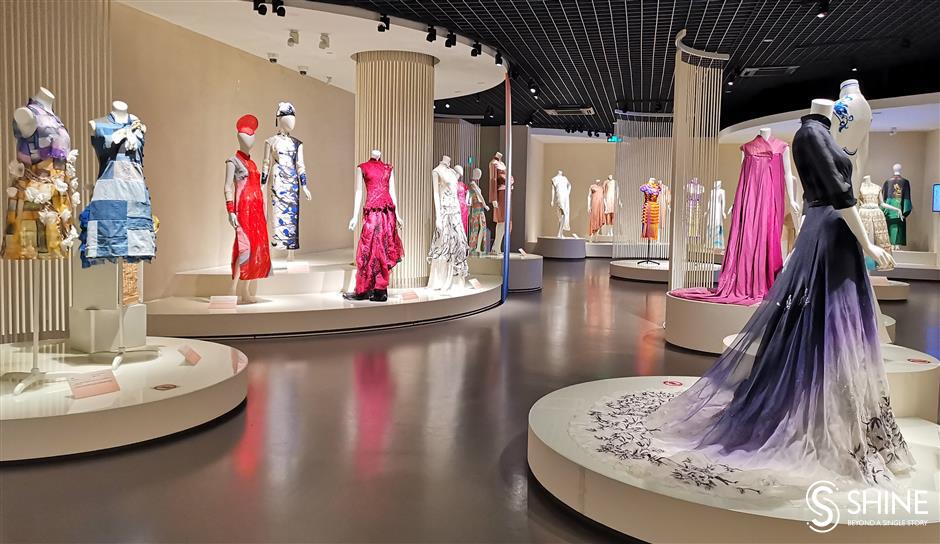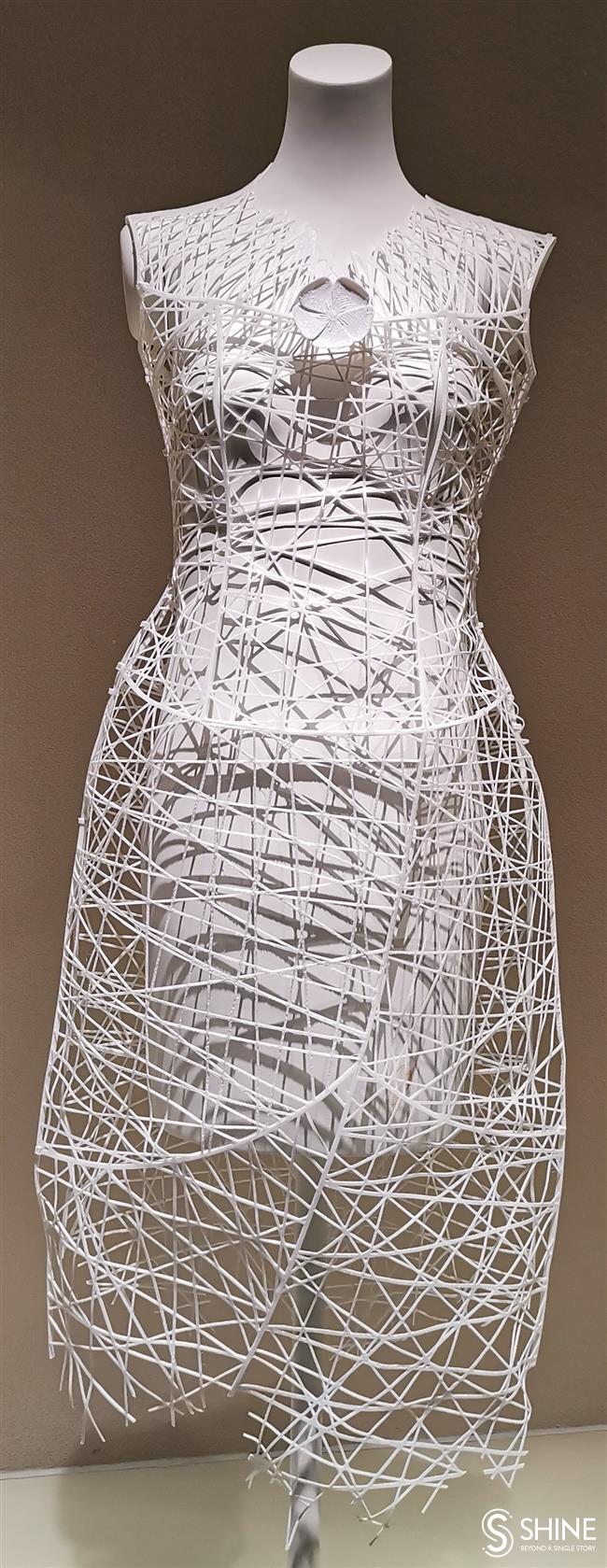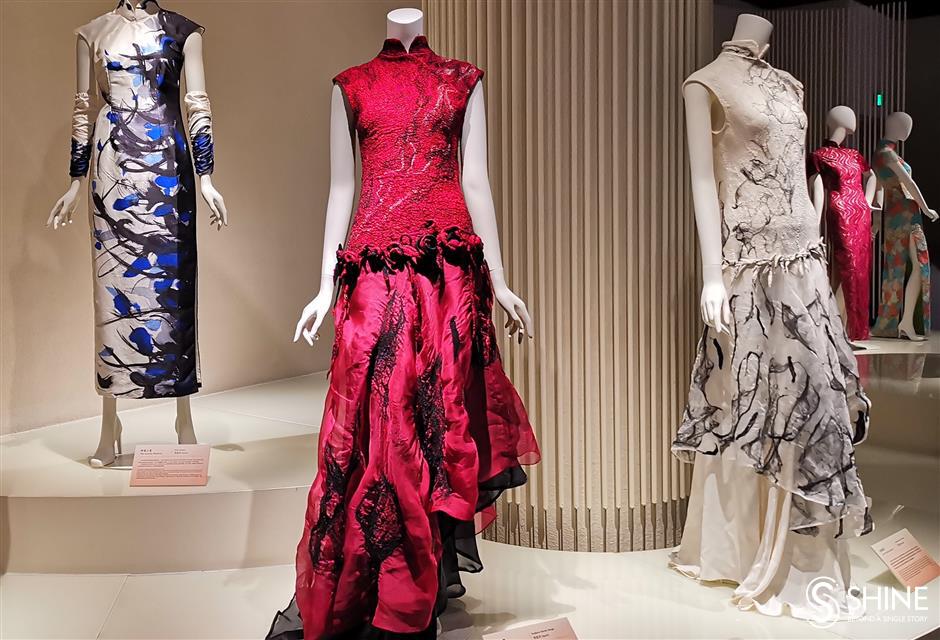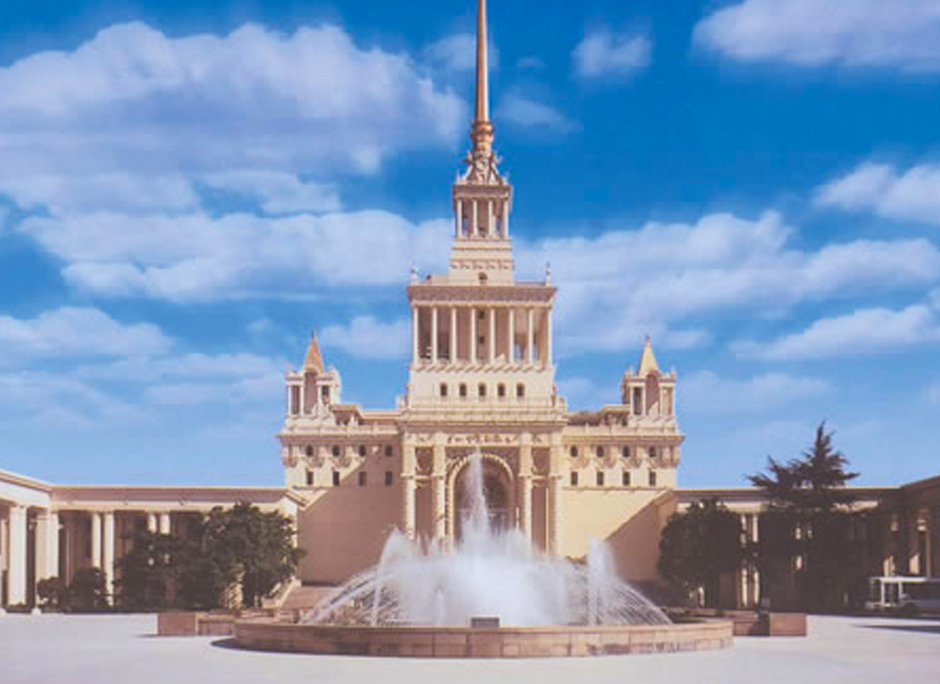Designers take a unique approach to qipao

Showcased are part of the exquisite qipaos at the annual Global Qipao Invitational Exhibition at the China National Silk Museum in Hangzhou through October 31, 2021. Through different inspirations, designers use a variety of textiles and colors to show the beauty of this traditional costume in China.
Qipao, or cheongsam, the body-hugging one-piece dress usually made from silk, is considered the ideal expression of Chinese femininity. Hangzhou, one of the birthplaces of silk, started producing the material around 5,000 years ago.
The China National Silk Museum, the country’s largest organization studying the history of silk, has hosted the annual Global Qipao Invitational Exhibition for three years in Hangzhou.
This year, the exhibition will last through October 30, 2021, displaying about 40 qipaos by designers from home and abroad.
“The exhibition is expected to be a platform for cultural exchanges among different countries and regions along the Silk Road,” said Zhao Feng, curator of the museum. “I hope qipao can develop into an icon in terms of international exchanges.”
This year, the exhibition focuses on “poetry.” Designers take qipao as a medium to express their poetic ideas with the dresses categorized in three sections according to different styles.
The first part displays qipaos inspired by ancient prose, poems and palaces.
Xiong Ying, founder of domestic Heaven Gaia brand, draws inspiration from the Old Summer Palace in Beijing and prints traditional Chinese gardens and houses on black dresses. Though the palace is now in ruins, people can imagine its heyday through the design.
Designer Shih Shan-Ying specializes in computer and 3D print design. He used 3D-printed white lines to create crisscrossed pattern with a plum blossom shape in the center. The abstract geometric patterns create diversified shadows under light.
He was inspired by the famous poem “Plum Blossom” written by Wang Anshi in the Northern Song Dynasty (960-1127). Plum blossom symbolizes strength, resilience and renewal, which explains why ancient Chinese literati were great admirers of them.

“Plum Blossoms” is made by Shih Shan-Ying who uses 3D printing technology to create crisscrossed pattern with a plum blossom shape in the center.
Many designers turn to traditional textiles to create ornate qipao. In southern China’s Guangdong Province, there is a variety of gauze considered as a top-notch product. People called it xiangyun (香云), literally meaning “aromatic cloud.”
Xiangyun gauze was also called “soft gold” thanks to its time-consuming manufacturing process, high price and limited production. Jiang Ping from Guangdong Province uses low-saturation hued gauze to tailor a dress and cover it with a semi-transparent cloak, making qipao’s slim-cut silhouette loom through the cloak.
The second part is centered on romance, an eternal theme of poetry. Visitors can see a dozen dresses designed with exotic elements from foreign designers, learning the integration of Chinese dresses and different ethnic features.
Spanish artist Kima Guitart uses organza to create a red qiapo. This thin, plain-weave, sheer fabric is often applied in costumes for ceremonies and rites in Spain.
The European-style organza combines with Chinese silk, presenting a harmonious and majestic feeling.
Svetlana Gromik Venger, another Spanish designer, made a qipao with distinct flamenco characteristics. Traditional flamenco outfits are body-hugging to mid-thigh, and then continue in multiple layers of ruffles to the ankle, typically brightly colored, usually in black, red and may be either plain or patterned.
She designs the part above mid-thigh with distinctive qipao collars and clothing buttons, but retains the multiple layers of ruffles. The dress is in bright patterns of red and black.
The final part of the exhibition displays work from noted fashion designers.
Chinese-born Uma Wang, a graduate from London’s Central Saint Martins design school, has already created a buzz outside China.
She designs a piece of qipao with flying sleeves to create a modern silhouette. The long ribbons attached to the lower part offer a casual appeal, while the traditional embroidered patterns take on traditional aesthetics. The design makes it an outfit for both casual and important occasions.

The Lovely Flowers qipao (left) is made by Spanish designer Kima Guitart who uses organza to create this piece. The red dress (center) is created by Spanish designer Svetlana Gromik Venger with distinct flamenco style. “Born From a Cocoon” is made from silk by Svetlana Gromik Venger.
Global Qipao Invitational Exhibition
Date: Through October 30, 2021
Venue: China National Silk Museum
Address: 73-1 Yuhuangshan Rd
玉皇山路73-1
